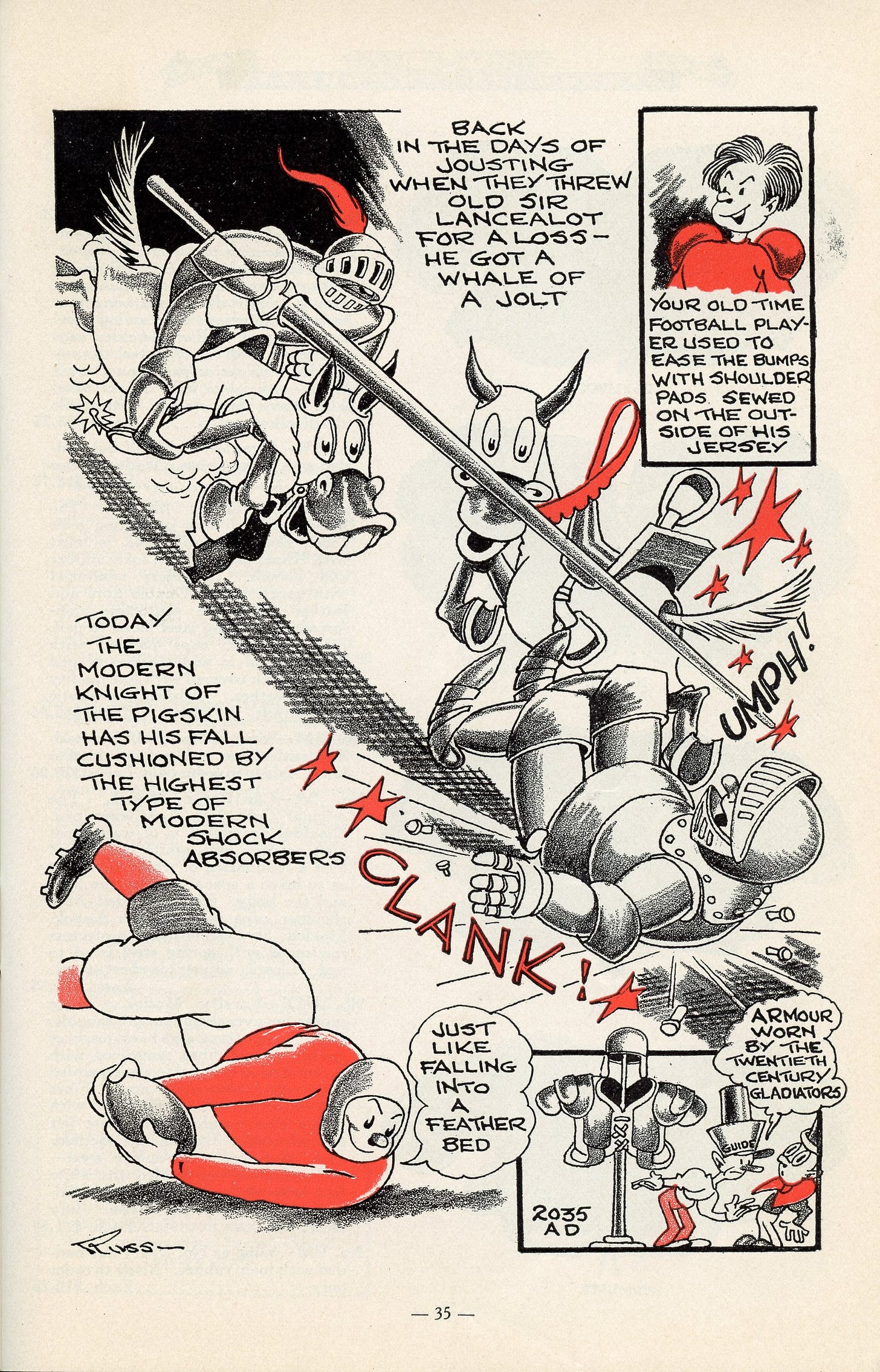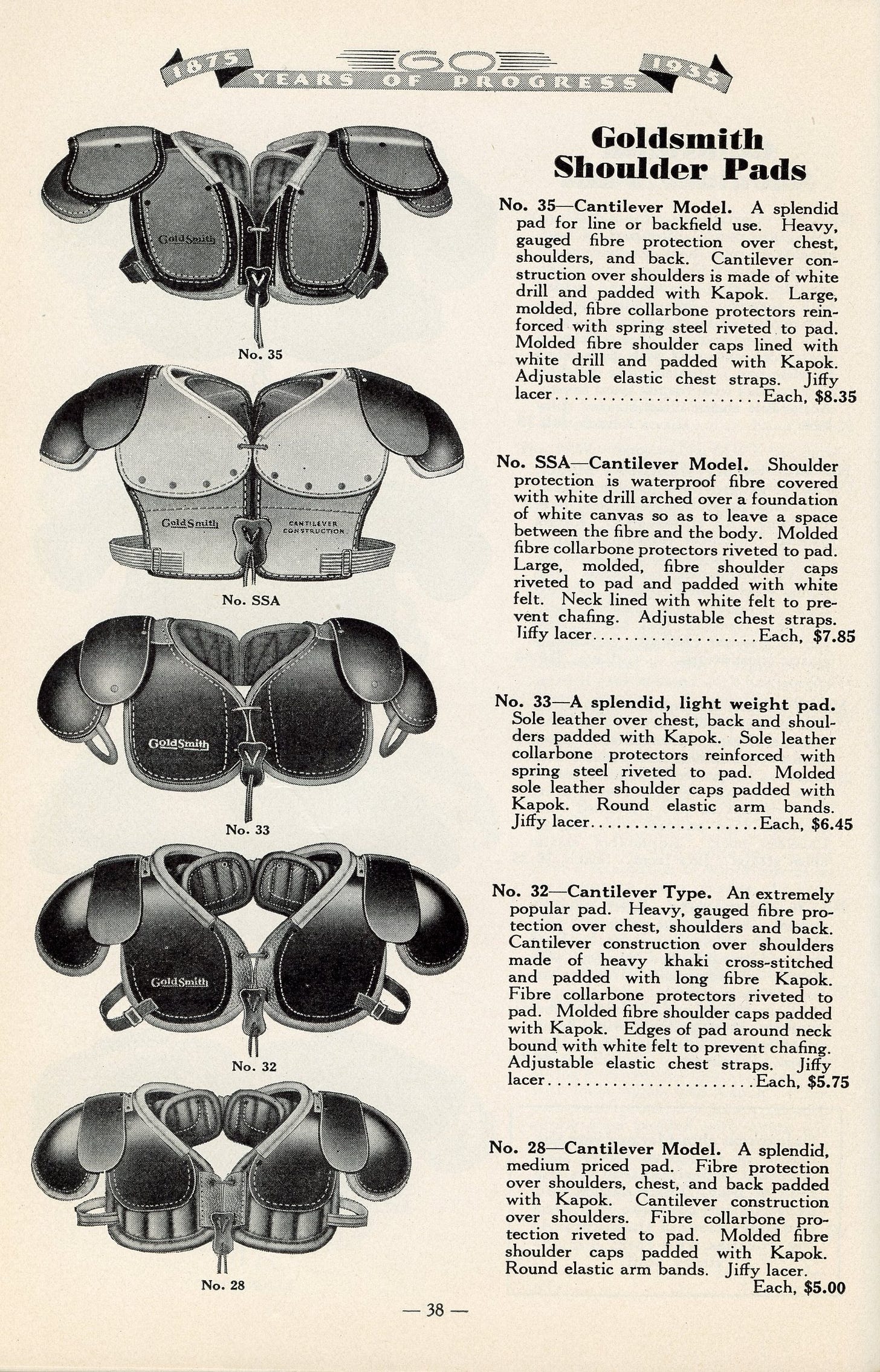Today's Tidbit... 1935 GoldSmith Sports Equipment Shoulder Pads
This is the seventh of seven articles in a series covering the 1935-36 Fall & Winter GoldSmith Athletic Equipment catalog. Preceding each section of the catalog is a one-page cartoon about the history of that type of equipment, in today's case, football shoulder pads.
Click the appropriate link for other stories in the series:
Consulting Staff | Footballs | Shoes | Pants | Jerseys | Helmets | Shoulder Pads | Miscellaneous
Our shoulder pads cartoon harkens back to Middle Age lancers, the guys in armor who rode softly and carried big sticks. Then we turn to the turn-of-the-century boys with pads sewn on the jersey exterior. Moving ahead to 1935, they believed shoulder pad design and technology had reached their zeniths, and there could not be better-designed shoulder pads than those shown in the catalog since they were at the point that falling on the field felt like "falling into a feather bed."
The cartoon element in the bottom right shows a museum tour guide in 2035 A. D. describing the shoulder pads and helmets worn back in 1935. Our review of the GoldSmith catalog is a dozen years early, but it was a pretty good prediction nonetheless.
Goldsmith's top-end shoulder pad models used cantilevered or stacked designs by 1935. The hard caps were made of molded fibre since plastics were not yet available -fibreglass was invented the following year. Felt or kapok, a fibre derived from the fruit pods of tropical kapok trees, comprised most of the padding. Goldsmith's HMF and UMX models included small amounts of foam rubber, a product developed in 1929. Their MW, MH, and UM models used foam rubber more extensively and were available only by special order and $3 to $8 more per unit.
As the models stepped down in price, there were changes in design and the materials used in their construction. Model PK model retains the deeper chest and back protection seen in the higher-end models, while its plates and caps are fibre. The moderately priced models cover only the upper chest and back and use sole leather for mechanical protection.
The models on the pages above and five of six on page 38 used adjustable straps that wrapped around the chest to secure the shoulder pads to the body. Model 32 kept the pads in place using the older method of straps encircling the upper arms.
Page 39 offers four models that use arm rather than chest straps. More interesting are the rib protectors hung from the shoulder pads. They were available sewn onto the shoulder pads or detachable. They protected the sides and ribs and were called blocking pads since a primary justification for them was the rolling block technique widely used in football before blocking below the waist was restricted and offensive players gained the use of their hands when blocking.
I originally intended to end the series with this Tidbit since it is the seventh of the seven product categories with an introductory cartoon. However, if enough readers pull out their lighters or mobile phones, wave them back and forth, and call for an encore, we'll add an eighth Tidbit next week. If an encore is warranted, the eighth segment will cover miscellaneous items such as sideline capes, tackling dummies, and letters and monograms. There will not be a cartoon to lead the way, but we'll still learn a thing or two.
Football Archaeology is reader-supported. Click here to buy one of my books or otherwise support the site.







You can't stop this series...you can only hope to contain it! (In other words...more, please!)
Had me at sideline capes!